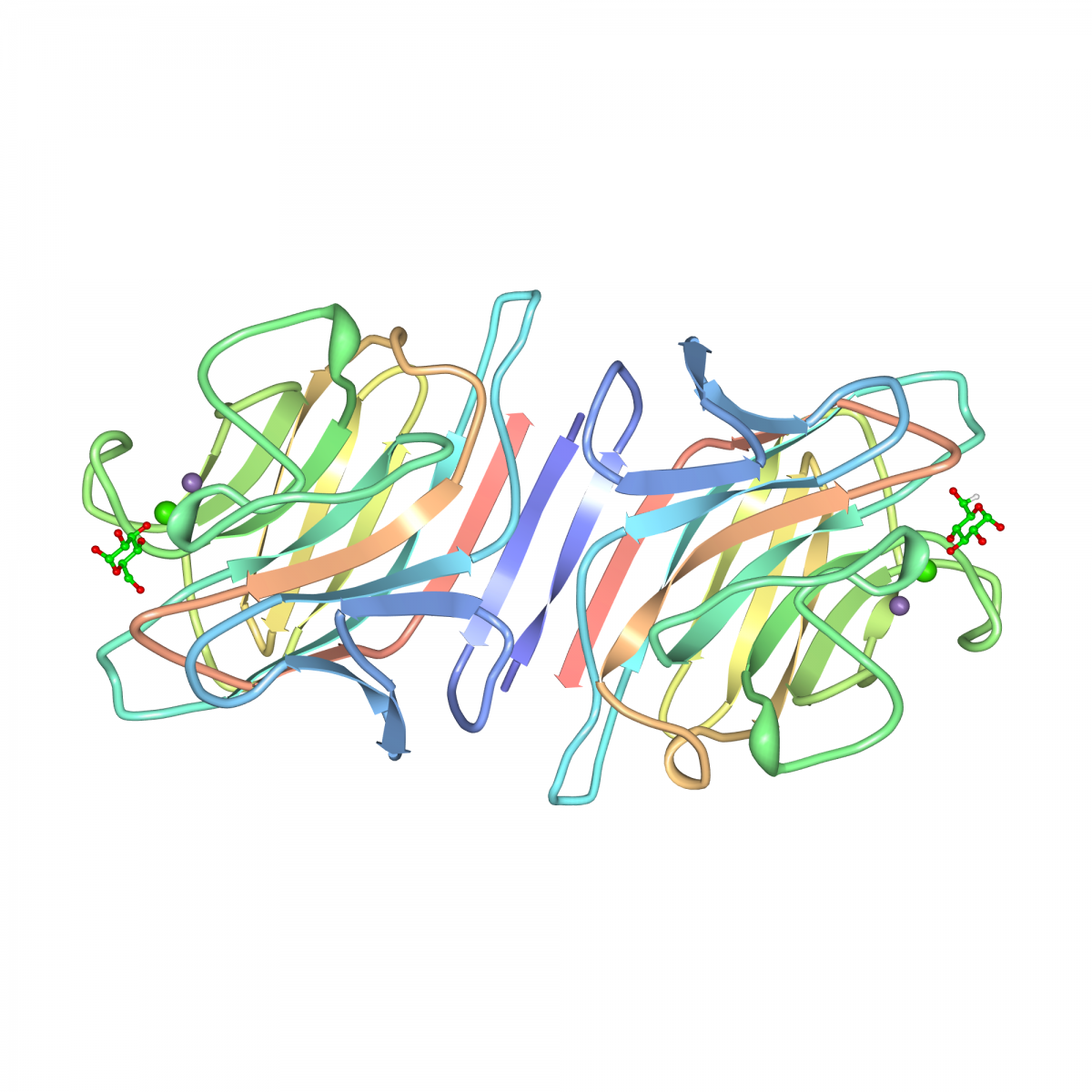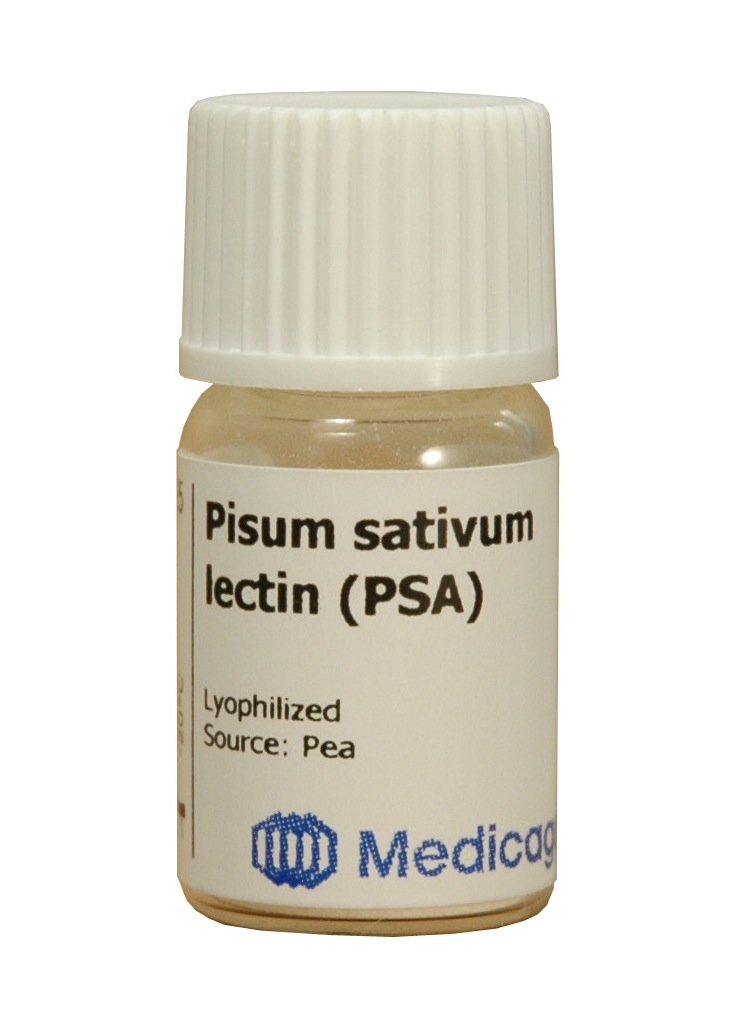Absolute Lectins
Pisum sativum lectin (PSA)
*** For pack size 1g or more, please contact us to inquire about pricing
Features
- Ultrapure quality
- Carbohydrate binding specificity: α-D-mannose and α-D-glucose
- Non-specific blood group agglutinin
- Mitogenic activity
- Lyophilized powder
Product description
Pisum sativum lectin or agglutinin (PSA) is isolated from peas and purified by affinity chromatography. The lectin has four subunits and a molecular weight of 49 kDa. PSA agglutinates human erythrocytes but is not blood group specific (1). It displays specificity toward α-D-mannose and α-D-glucose (1) and has mitogenic activity similar to Concanavalin A (2).
Medicago’s Pisum sativum lectin is supplied as a white to cream coloured lyophilized powder. The purity of PSA is determined by SDS- electrophoresis, which generates two bands at 17 kDa and 5,7 kDa corresponding to the α- and ß-chains that are formed in solution, below pH 5.8 (4). The lectin is available in vials containing 100 mg, 25 mg or 10 mg powder and the product is to be used for laboratory work only.
Applications
- Agglutination studies
- Model system of how proteins recognize carbohydrates
Directions for use
The lectin may be reconstituted with 2 ml of deionized water before use. Spin the vial gently until full dissolution. Aggregation is thought to occur in the presence of high concentrations of 2-mercaptoethanol.
Shipping and storage
The product is shipped at -20°C however for over-the-day transport it may be shipped at ambient temperature. The lyophilized powder is stable for more than three years from production date when stored below -20°C. After reconstitution with deionized water, the solution may be stored frozen in working aliquots for up to 12 months.

References
(1) Liener I. E., Sharon N., Goldstein I. J., (1986) The Lectins – Properties, Functions and Applications in Biology and Medicine.
(2) Preedy V. R., Watson R. R. (2005). Reviews in food and nutrition toxicity Vol 4.
(3) The Structure of Pea Lectin-D-Glucopyranose Complex at a 1.9 A Resolution Pletnev, V.Z., Ruzheinikov, S.N., Tsygannik, I.N., Mikhailova Yu, I., Duax, W., Ghosh, D., Pangborn, W. (1997) RUSS. J.Bioorganic Chem. 23: 469.
(4) Schwarz F. P., Puri K. D., Rama G. B., Surolia A (1993) Thermodynamics of Monosaccharide Binding to ConcanavalinA, Pea (Pisum sativum)Lectin, and Lentil (Lens culinaris) Lectin. J Biol Chem. Vol. 268, No.11, p 7668-7677

